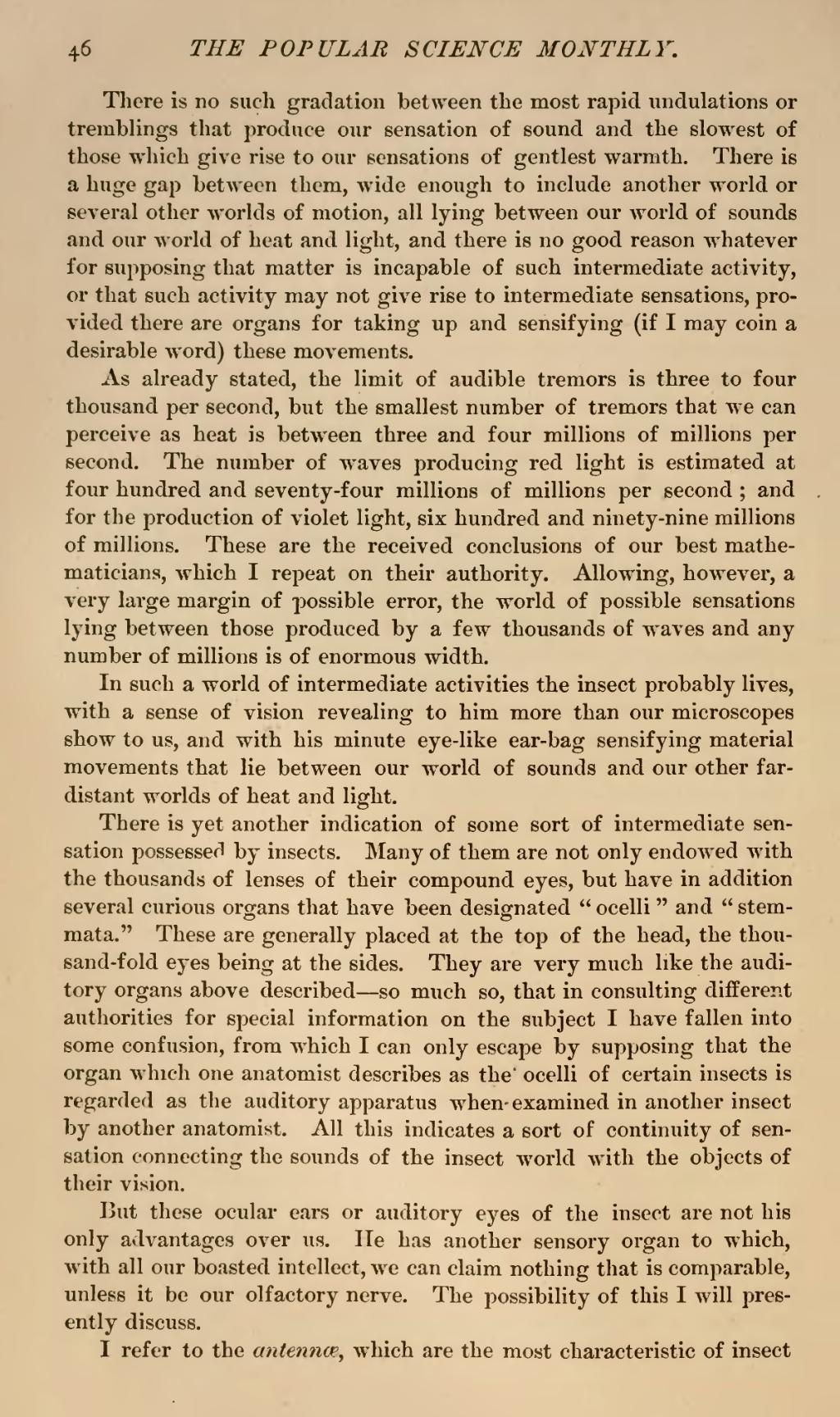There is no such gradation between the most rapid undulations or tremblings that produce our sensation of sound and the slowest of those which give rise to our sensations of gentlest warmth. There is a huge gap between them, wide enough to include another world or several other worlds of motion, all lying between our world of sounds and our world of heat and light, and there is no good reason whatever for supposing that matter is incapable of such intermediate activity, or that such activity may not give rise to intermediate sensations, provided there are organs for taking up and sensifying (if I may coin a desirable word) these movements.
As already stated, the limit of audible tremors is three to four thousand per second, but the smallest number of tremors that we can perceive as heat is between three and four millions of millions per second. The number of waves producing red light is estimated at four hundred and seventy-four millions of millions per second; and for the production of violet light, six hundred and ninety-nine millions of millions. These are the received conclusions of our best mathematicians, which I repeat on their authority. Allowing, however, a very large margin of possible error, the world of possible sensations lying between those produced by a few thousands of waves and any number of millions is of enormous width.
In such a world of intermediate activities the insect probably lives, with a sense of vision revealing to him more than our microscopes show to us, and with his minute eye-like ear-bag sensifying material movements that lie between our world of sounds and our other far distant worlds of heat and light.
There is yet another indication of some sort of intermediate sensation possessed by insects. Many of them are not only endowed with the thousands of lenses of their compound eyes, but have in addition several curious organs that have been designated "ocelli" and "stemmata." These are generally placed at the top of the head, the thousand-fold eyes being at the sides. They are very much like the auditory organs above described—so much so, that in consulting different authorities for special information on the subject I have fallen into some confusion, from which I can only escape by supposing that the organ which one anatomist describes as the ocelli of certain insects is regarded as the auditory apparatus when examined in another insect by another anatomist. All this indicates a sort of continuity of sensation connecting the sounds of the insect world with the objects of their vision.
But these ocular ears or auditory eyes of the insect are not his only advantages over us. He has another sensory organ to which, with all our boasted intellect, we can claim nothing that is comparable, unless it be our olfactory nerve. The possibility of this I will presently discuss.
I refer to the antennæ, which are the most characteristic of insect

